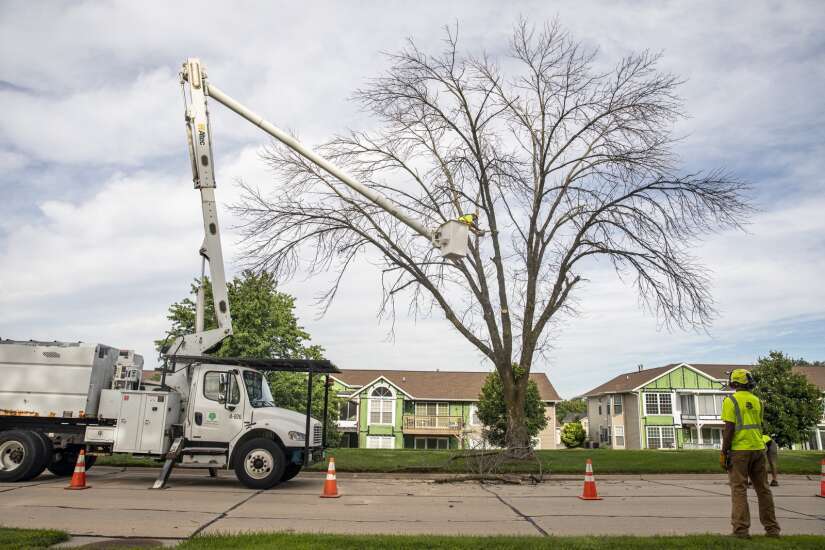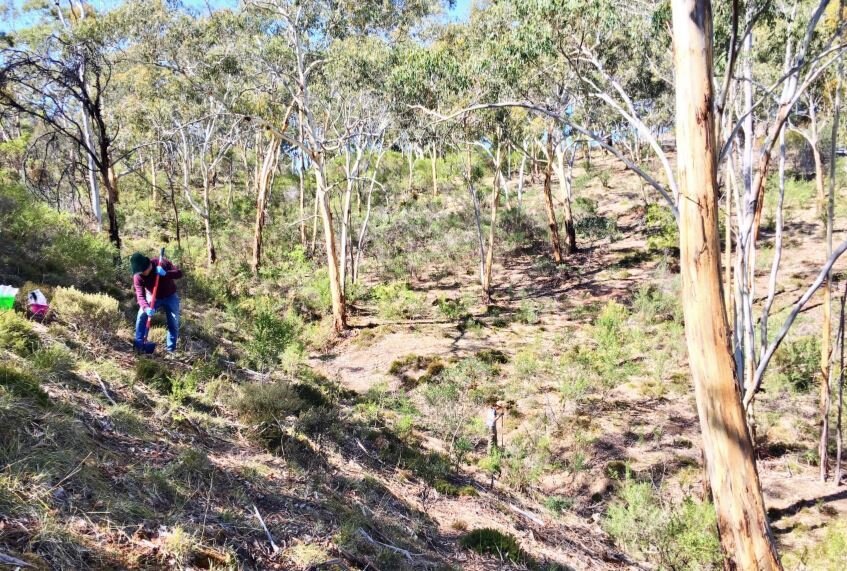Happy September! Kids are back to school and the temps today may feel like Fall, but there are plenty of planting days left in the season. Planting trees in late summer allows for better water uptake, more energy for root growth, and less chance of leaf scorch. Don't forget to keep watering new trees until the ground freezes.
And to make sure your investment returns in the spring, don't move firewood if you are traveling this holiday weekend. Bad bugs hitch a ride in firewood and can devastate trees and forests if spread. Support the local economy and only "buy it where you burn it".
 PENBAY PILOT -The Town of Camden has launched a new, large-scale program of planting shade trees along our residential streets and has budgeted for over 50 trees to be planted this year. Dave St. Laurent and his Public Works crew have planted over half of the allocated trees so far. They are watering them assiduously and expect the work to go on into the fall.
We have added to Camden’s tree canopy so far with four sturdy young Ginkgos (best for heavy traffic exposure), a number of Oaks, Sugar Maples, Red Horse Chestnuts, Kentucky Coffee trees, Honey Locusts, and some smaller trees which will not produce as much shade but fit better under the electric wires.
The Town is seeking participation in the Camden Shade Tree Project and would like citizens to consider if a shade tree could be beneficial for your street. Read more...
 THE GAZETTE - More than a decade into Iowa’s losing battle against the emerald ash borer, many cities still are scrambling to remove dying ash trees from public rights of way.
But the unknown number of ash trees on private properties — sometimes estimated to be three times the number on public property — are the owners’ responsibility. And there is little to no funding or resources to help with removal or treatment costs.
As Iowa residents know all too well after the 2020 derecho, the price tag for tree removal is often steep. Bids for mature trees range from $2,000 to $5,000.
While private property owners may hesitate to remove their dying ash trees due to the cost, foresters and arborists warn the clock is ticking to remove the trees before they deteriorate into safety hazards.
“Removal fairly quickly as they die is important if they're in an area where they could be at risk for falling on something or hurting someone,” Iowa Department of Natural Resources district forester Mark Vitosh said. “They do become rather critical rather quick.” Read more...
CT Landowner Converts Mowed Field, Other Habitat Into Haven for Birds
 Thalia first began by managing her property for monarch butterflies and birds, “the easy way.”
“I"m not from this part of the country so I had to do some basic research about uncovering and encouraging native shrubs like huckleberry, summersweet, and flowers. Then the next season I put in a wider assortment of trees like hawthorne, red cedar, and basswood (in addition to the maples and oaks and hickory already present), and turned a grassy, lawn-like area into a meadow,” she describes.
Thalia lives in what she calls an “ex-urb, a mildly rural and woodland area.” At first she wondered, “What can I really do? But then I realized I can do so much -- even just planting more of the right shrubs, making sure there’s berries all year long, a mix of tree species…and within a year, I saw more birds. And that confirmed the value to continue on.” Read more...
 PHYS.ORG - Robust long-term ecosystem restoration relies not just on replanting native vegetation but on the recovery of underlying soil biodiversity—yet this area has received little attention and is poorly understood, Flinders University researchers say.
A new article in Biological Conversation calls for better insights and solutions to fill this gap to help improve the success of restoration efforts that are so vital to rebuilding ecosystems and returning biodiversity to land damaged by land clearance, mining, urbanization and other impacts.
"We urge restoration ecologists to include microbes in their studies and reporting to landowners and policymakers to more accurately map ecosystem responses to revegetation efforts," says senior researcher Dr. Martin Breed, from Flinders University College of Science and Engineering. Read more...
Balsam fir needles can kill ticks that cause Lyme disease, Dalhousie researcher finds
What does the summer drought mean for the fall foliage in New England?
Forest & Shade Tree – Insect & Disease Conditions for Maine/August edition
Sept 10 - Forestry Field Day - Ashland
Sept 13 - "Biodiversity on the Woodlot Walk and Talk" with IF&W's private lands wildlife biologist Joseph Roy Tuesday, September 13 from 4 to 6pm in Ludlow. Trail walk with discussion on increasing diversity "from the ground up " to benefit forest stands and wildlife. Class size is limited. FMI contact Southern Aroostook SWCD 254-4126 or angela.wotton@me.nacdnet.net.
Oct 8 - Due date for proposals to Arbor Day for large-scale tree planting projects
|